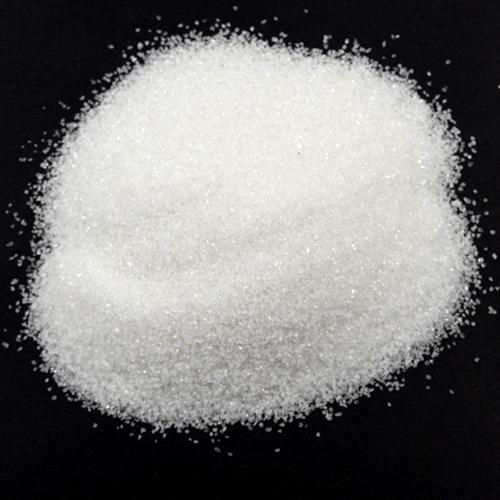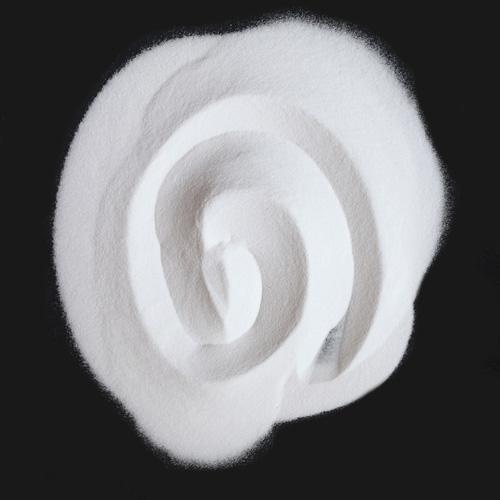
White corundum is made from industrial alumina powder, which is smelted in an arc at a high temperature above 2000 ℃ and then cooled. After crushing and shaping, magnetic separation to remove iron, it is divided into various particle sizes.
White fused alumina for refractory material
White corundum is made from industrial alumina powder, which is smelted in an arc at a high temperature above 2000 ℃ and then cooled. After crushing and shaping, magnetic separation to remove iron, it is divided into various particle sizes.
Its texture is dense, high hardness, and the grains form sharp angles. It is suitable for the manufacture of ceramics, grease-bonded abrasive tools, grinding, polishing, sandblasting, precision casting (corundum for fine generals), etc. It can also be used for manufacturing advanced refractory materials. The code "WA" is consistent with international general standards and national standards. Most of them are for export, and a certain amount is also supplied to domestic users.
Product granularity is produced according to international standards and national standards, and can be processed according to user requirements. The general particle size number is F4~F220, and its chemical composition varies depending on the particle size. The outstanding feature is that the crystal size is small and impact-resistant. If it is processed and broken by a self-grinding machine, the particles are mostly spherical particles, the surface is dry and clean, and it is easy to bond with a binder.
The density of white corundum is divided into two types, one is the bulk density of white corundum, and the second is the density of white corundum. The bulk density is 1.53~1.99g/cm3, and the bulk density of the abrasive is related to the particle size of the abrasive, the composition of the particle size, the variety, the particle shape and other factors. Generally speaking, the bulk density of coarse-grained abrasives is larger than that of fine-grained abrasives, and the bulk density of mixed-grained abrasives is greater than that of single-grained abrasives.
|
Project |
particle size range |
Al2O3%≥ |
Na2O%≤ |
|
WFA |
0-1,1-3,3-5mm |
99 |
0.60 |
|
WA and WA-P |
F4~F80 P12~P80 |
99.10 |
0.35 |
|
F90~F150 P100~P150
|
99.10 |
0.40 |
|
|
WA and WA-P |
F180~F220 P180~P220 |
98.6 |
0.50 |
|
F230~F800 P240~P800 |
98.30 |
0.60 |
|
|
F1000~F1200 P1000~P1200 |
98.10 |
0.70 |
|
|
P1500~P2500 |
97.50 |
0.90 |
|
|
WA-B |
F4~F80 |
99.00 |
0.50 |
|
F90~F150 |
99.00 |
0.60 |
|
|
F180~F220 |
98.5 |
0.60 |

Characteristics of white corundum raw materials:
White corundum is made of high-quality aluminum oxide powder as raw material, which is refined and crystallized by electrofusion. It has high purity, good self-sharpening, acid and alkali corrosion resistance, high temperature resistance, and stable thermal performance; its hardness is slightly
It is higher than brown corundum, with slightly lower toughness, strong grinding ability, low calorific value and high efficiency; it can be used to make abrasive tools, which can be used for grinding fine-grained materials such as high-carbon steel, high-speed steel and stainless steel. Can be used for precision casting and advanced refractories.
Brown corundum is made of natural bauxite as raw material, carbon (mainly coke) is used as reducing agent, and iron filings are added as sedimentation agent (clarifier) to form ferrosilicon deposited on the bottom of electric furnace.
Brown Fused Alumia powders are fused wIth premium raw materials and 3500 KVA furnace. It is perfect material specifically manufactured to be used for general abrasive applications in bonded abrasive tools, polishing and sandblasting grit. It has lower hardness and abrasive capacity than diamond, boron carbide, and silicon carbide, it is widely used for grinding ferrous materials, finishing tough and hard materials. It is also be used as high-class refractory materials. Brown Fused Alumia is offered in macro and micro powder form, in both F and P grades.
Common low-creep high-alumina bricks can be used in blast furnace hot blast stoves, as well as other industrial kilns, and can also be made into low-creep high-alumina bricks of different sizes according to specific construction requirements, such as lattice bricks, special-shaped bricks, anchor bricks, etc. , mainly used in industrial kilns in long-term high temperature environments
Coke furnace silicon bricks are mainly used in the heat storage room, oblique road, charcoal room, combustion room, top of the furnace, and bottom of the furnace.
The refractory ramming material is prepared from a high proportion of granular and powdery materials and a very low proportion of binders and other components, even all of which are composed of granules and powders, and are subject to strong ramming. Bulk materials for construction.
High alumina refractory bricks are the backbone of high-temperature industrial processes. By understanding their properties, applications, and supplier selection criteria, businesses can enhance operational efficiency and reduce downtime. For industries seeking durable, cost-effective solutions, partnering with certified refractory materials suppliers in China ensures access to cutting-edge technology and reliable supply chains.
YY Refractory supplies premium-grade ramming material (ramming mass) for blast furnaces. Heat-resistant, erosion-proof, and easy to apply. Boost furnace longevity & efficiency. ISO-certified. Get a quote today!
Special Acid-proof Brick Lightweight acid-proof Brick Acid resistant brick is the ideal choose for your project with their features of proof pressure, corrosion resistance, easy to clean and acid-base resistance.



